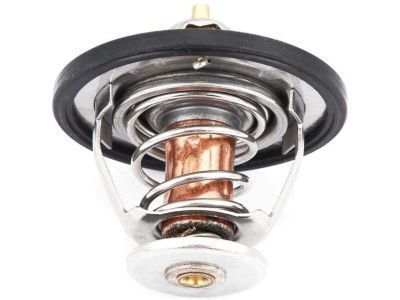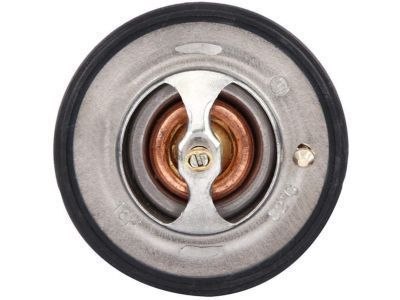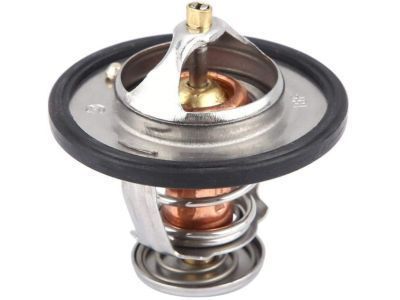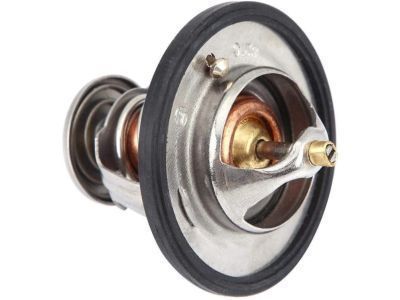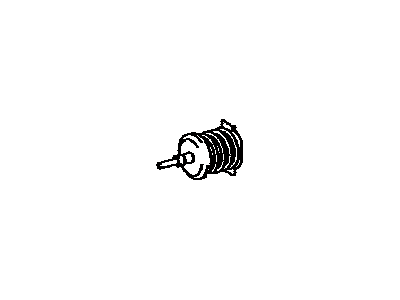

My Garage
My Account
Cart
Genuine Toyota Prius Thermostat
Engine Coolant Thermostat- Select Vehicle by Model
- Select Vehicle by VIN
Select Vehicle by Model
orMake
Model
Year
Select Vehicle by VIN
For the most accurate results, select vehicle by your VIN (Vehicle Identification Number).
1 Thermostat found
Toyota Prius Thermostat
Part Number: 90916-03093$22.48 MSRP: $31.42You Save: $8.94 (29%)Ships in 1-3 Business Days
Toyota Prius Thermostat
The Thermostat in Toyota Prius vehicles and is located close to the radiator; it is a very important part of the cooling system. Its main use is in controlling the temperature of the said engine, so that it does not go beyond a certain temperature range which is the most suitable for its use. The thermostat works as an example of closed loop control system, which feels the heat and manages the circulation of the coolant to manage and maintain the temperatures. There have been mechanical thermostats as well in Prius models such as; bimetallic strips and wax pellet thermostats. These devices oppose to temperature changes by either increasing or decreasing in size with the purpose of regulating heat in the engine. Pneumatic systems have also occurred as a development of the thermostat technology to boost temperature control capacity. All in all, the Toyota Prius thermostat is quite significant in ensuring the functionality and effectiveness of the engine.
If you are in demand for superior quality and affordable OEM Toyota Prius Thermostat, then shop with us! We own a wide range of the reduced-priced genuine Toyota Prius Thermostat. You can purchase in confidence as all parts come with a manufacturer's warranty. Any issues with our products? No need to worry as we have a hassle-free return policy to guide you every step of the way.
Toyota Prius Thermostat Parts Questions & Experts Answers
- Q: How to replace the thermostat in my Toyota Prius?A:Before assuming the thermostat is the cause of a cooling system problem, it is important to perform a thorough check. Verify the coolant level, drive belt tension, and the operation of the temperature gauge or light. If the engine takes a long time to warm up, indicating a stuck-open thermostat, it should be replaced with a new one. In case the engine runs hot and the right (passenger's side) radiator hose is not hot while the engine is, it suggests a closed thermostat preventing coolant flow to the radiator. In this situation, replacing the thermostat is necessary. Conversely, if the hose is hot, it signifies that the coolant is flowing and the thermostat is open. For the thermostat replacement, start by removing the radiator cover and plastic lower engine covers for 2004 through 2009 models. Drain the coolant from the radiator. On 2010 and later models, disconnect the coolant hose from the inlet air filter, detach the wiring harness clamp, and remove the inlet air filter assembly by removing three bolts and the dipstick tube for clearance. Detach the thermostat housing from the engine, being prepared for some coolant spillage as the gasket seal is broken. The radiator hose can remain attached unless the housing itself needs replacement. Remove the thermostat, noting its installation direction, and thoroughly clean the sealing surfaces. During installation, fit a new gasket evenly onto the thermostat, ensuring proper alignment. Install the thermostat and housing, positioning the jiggle pin at the highest point. Tighten the housing fasteners to the specified torque, and then reinstall the remaining components in the reverse order of removal. Refill the cooling system, start the engine, and check for any leaks or issues with the system's operation.
